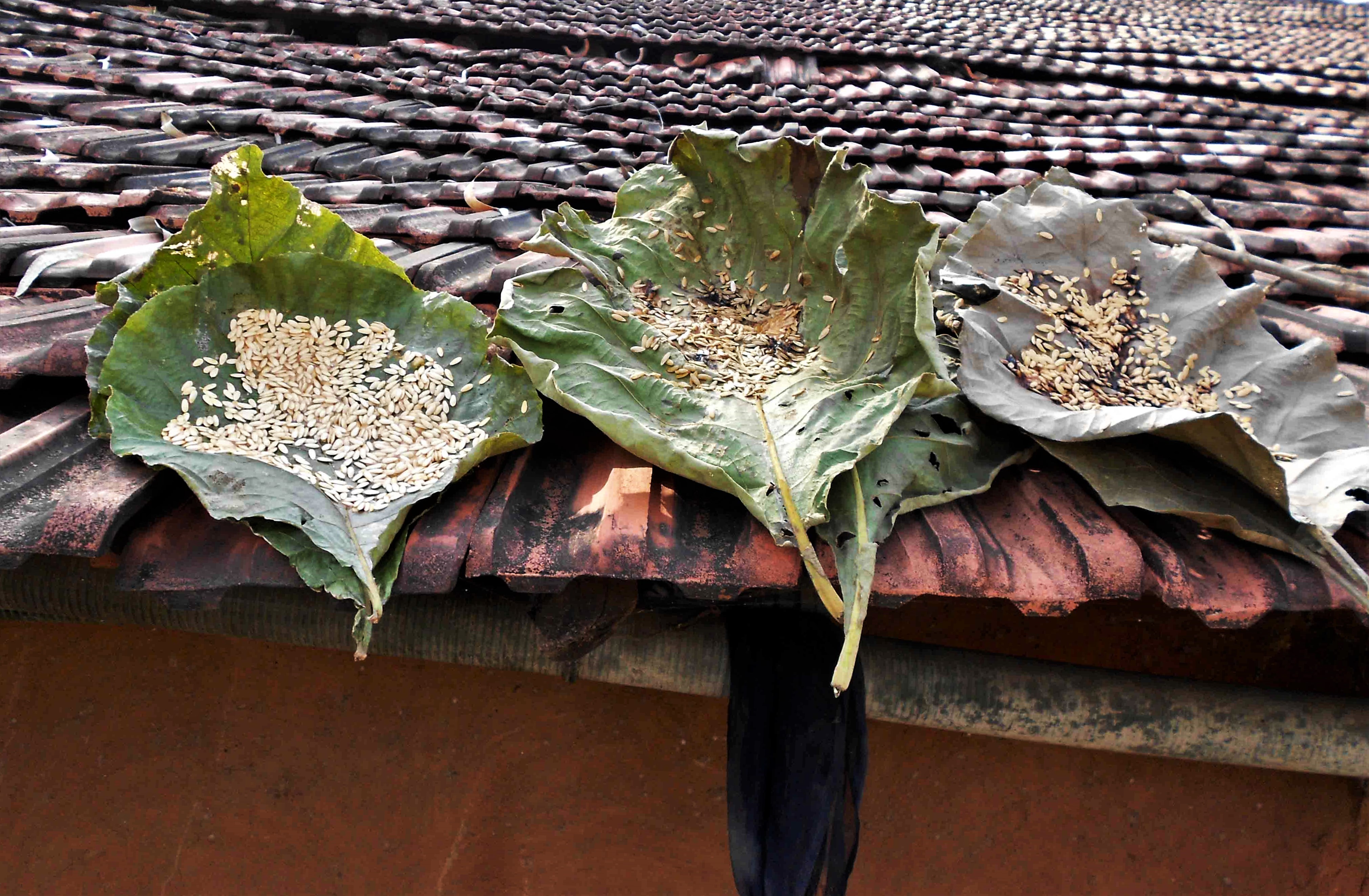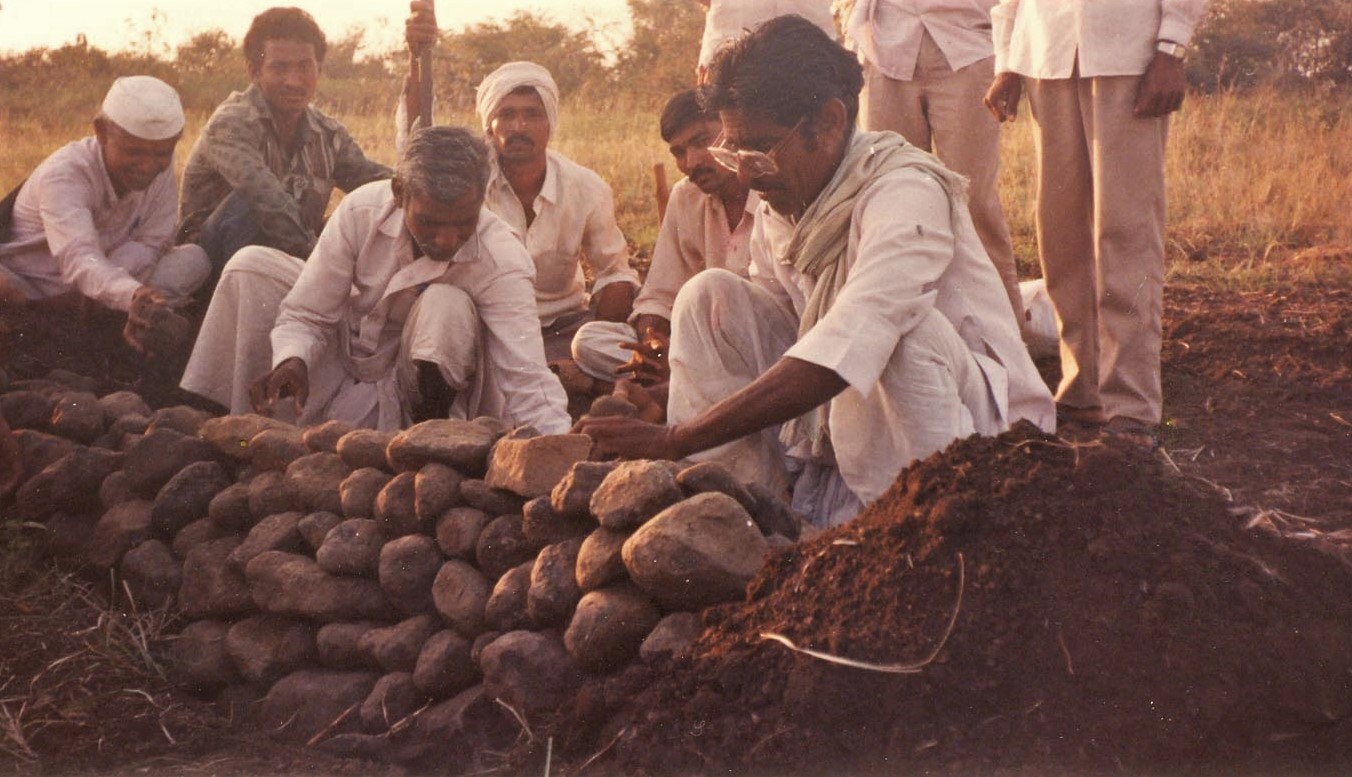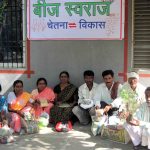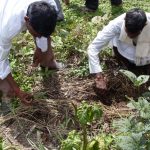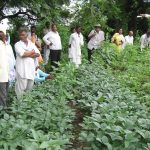AGRICULTURE PROGRAMME
“Farmer” – Men and Women are the graduates and scholars of the fields they work in. Also managers, entrepreneurs, risk-takers against the market and climate fluctuations. Their traditional knowledge, technology and wisdom, have given record production for the country from time to time. However, this knowledge has to be built upon and widened to include what new scientific information offers.
The privileged society often makes a mistake when seeing them as uneducated, non-performing sections and solicitors of empathy and subsidies – On the contrary, they feed the world against all odds of climate, market and consumer indifference.
A Monsoon-Dependent Profession
Over 60 percent of the Indian population depends directly on the agricultural industry. However, agriculture depends on rainfall, which is highly variant. There is a lack of resources not only for farmers but also for the rest of the country, which depends on agriculture to meet their daily needs. Farmers cannot meet their basic needs to provide for their families due to erratic variations in productivity and growth on their land. There is a strong reason to believe that this has come about by following agriculture technologies which are expensive, both monetarily and ecologically.
Forces Beyond a Farmer’s Control
Global climate change, fluctuating market prices, and increasing wild animal attacks on agricultural lands are throwing insurmountable challenges at farmers who are already battling a hard life.
Unfair Remuneration for Farmers
Market forces are manipulating prices and ensuring farmers don’t get fair remuneration for their produce. This is, literally, dealing a death blow to farmers who aren’t able to make ends meet and feed their families. They are forced to take loans and are in severe debt. As a result, more than half of the farmers in India want to quit their profession, and worse, many commit suicide.
THE SOLUTION
HOW CHETANA-VIKAS CAN HELP
OBJECTIVES OF AGRICULTURAL PROGRAMME
Farmers can’t fight these battles alone. That’s why Chetana-Vikas has joined hands with them to promote self-reliance in order to help them:
- Improve the productivity of their land
- Increase the profitability of their farming business
- Ensure sustainability of their resources
- Create stability and quality of life for them and their families
- Securing appropriate livelihood income and food for producers: Farmers and farm labourers.
- Conservation and strengthening of natural resources, environment, ecosystems and nature so that all get adequate support for life.
- Awareness about women’s role in agriculture and the environment.
- Researching, developing and endorsing technologies that strengthen self-reliance, de-centralization, biological processes, and appropriate production.
SWAVALAMBI KHETI (FARMING FOR SELF-RELIANCE)
In the ‘60s, Green Revolution technologies played a crucial role in increasing production in agriculture to some extent. But this prosperity came at a heavy cost. Apart from the adverse effects of global climate change, wild animal attacks and unfair farmer remuneration, there were other factors that aggravated the plight of farmers:
The steadily decreasing fertility of lands, thanks to large doses of chemical fertilizers.
Despite using pesticides, the incidence of pests rose, introducing new diseases.
The expenses incurred in buying external, costly, inputs were also increasing year on year.
But at the same time, there was no significant increase in farmers’ remuneration.
And that paved the way for what can easily be termed as one of the biggest disasters in India’s agricultural sector: Farmer suicides.
THE EPIDEMIC OF FARMER SUICIDES
Battling unfair prices and acute poverty, farmers were forced to run their agricultural business in a vicious circle of debt.
But nobody could have imagined that farmers would get stuck in a quicksand of debt and end up taking their own lives. Over 3,00,000 farmers have committed suicide in the past decade with a few thousands being added almost every year.
No government package or promises of new technology, like genetically modified seeds, have given a long-term solution to this challenge. In fact, the so-called solutions became a problem themselves because of their myopic vision.
THE BIRTH OF THE SELF-RELIANT FARMER
Chetana Vikas realized that it was time farmers took it upon themselves to fix their problems instead of depending on external forces.
Swavalambi Kheti or farming for self-reliance is the magic wand that, we believe, can transform the lives of farmers.
Simply put, Swavalambi Kheti, is a mode of farming which strikes at the very root of the concepts being followed in conventional chemical farming.
Farmers in various regions have followed this concept and have experienced a significant difference in their lives. The key aspects of this Evergreen Revolution are closely linked to one another.
HOW CHETANA-VIKAS ACHIEVES THESE OBJECTIVES
We have six key programs as part of our agricultural development initiative.
These programs are closely tied with one another.
Please click on a program to learn more about its specific goals:
Farmers who tried this concept used seeds that have developed or evolved along with the local environment and those that display characteristics of good yield, pest and disease resistance, and great taste, either of grain or fodder. More Details
Farmers can leverage farmyard manure which can be procured from their cattle. This method is useful for maintaining the basic fertility of the soil. Biomass generation during the farming cycle ensures increased levels of carbon in the soil. More Details
The compendium of biodiverse crops in the farming system which mutually benefits each other results in a system that protects itself from pests and diseases. The use of appropriately selected seeds, farming methods, and rich biodiversity ensure that no form of pesticide– either chemical or biological– is ever needed. More Details
In situ soil (the process of protecting a plant in its natural habitat) and water management are imperative in a dryland agriculture system.
Construction of earthen bunds, drainage channels and even small water storage structures in the field go a long way in combatting erratic rainfall. More Details
Instead of monoculture of either cotton or pigeon pea, Swavalambi Kheti farmers plant 35 different food crops along with the main cash crop. This rich biodiversity of crops is made up of about five cereal crops, eight legumes, 16 different vegetables in a season (on dry land), two fodder crops, two spices and, four to five other minor produce. More Details
It’s extremely important to understand the role markets play in a farmer’s life. Today, instead of a system that complements their efforts, the market has created a system where farmers are exploited by graders and traders or marketing committees. More Details


